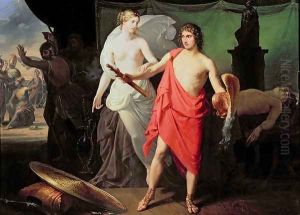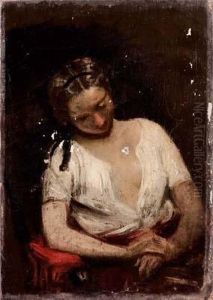Mauro Conconi Paintings
Mauro Conconi was an Italian painter born in 1815 in Como, Lombardy, a region in northern Italy. He was part of the 19th-century Romantic movement, which emphasized emotion and individualism, a reaction against the Industrial Revolution and the aristocratic social and political norms of the Age of Enlightenment. Conconi's work is less widely known internationally compared to his contemporaries, but he made significant contributions to Italian art, particularly in the Lombardy region.
Conconi's artistic journey began at the Accademia di Brera in Milan, where he studied under the guidance of prominent artists of the time. This period was crucial for shaping his style, which combined the Romantic emphasis on emotion and nature with a keen observation of human character and social conditions. His works often depicted historical and biblical scenes, landscapes, and portraits, characterized by their detailed execution and the vivid portrayal of light and shadow.
Throughout his career, Mauro Conconi participated in various exhibitions and received accolades for his contributions to Italian art. His paintings are part of collections in several Italian museums, showcasing his ability to capture the essence of his subjects with depth and sensitivity. Despite his death at a relatively young age in 1860, Conconi's legacy lives on through his art, which continues to be studied and appreciated for its contribution to the Romantic movement in Italy.
Not much is widely known about his personal life, which remains somewhat overshadowed by his artistic achievements. However, his work provides valuable insights into the cultural and social milieu of 19th-century Italy, reflecting the tensions and transformations of his time. Mauro Conconi's dedication to his craft and his ability to convey complex emotions and narratives through his paintings make him a noteworthy figure in the history of Italian art.

